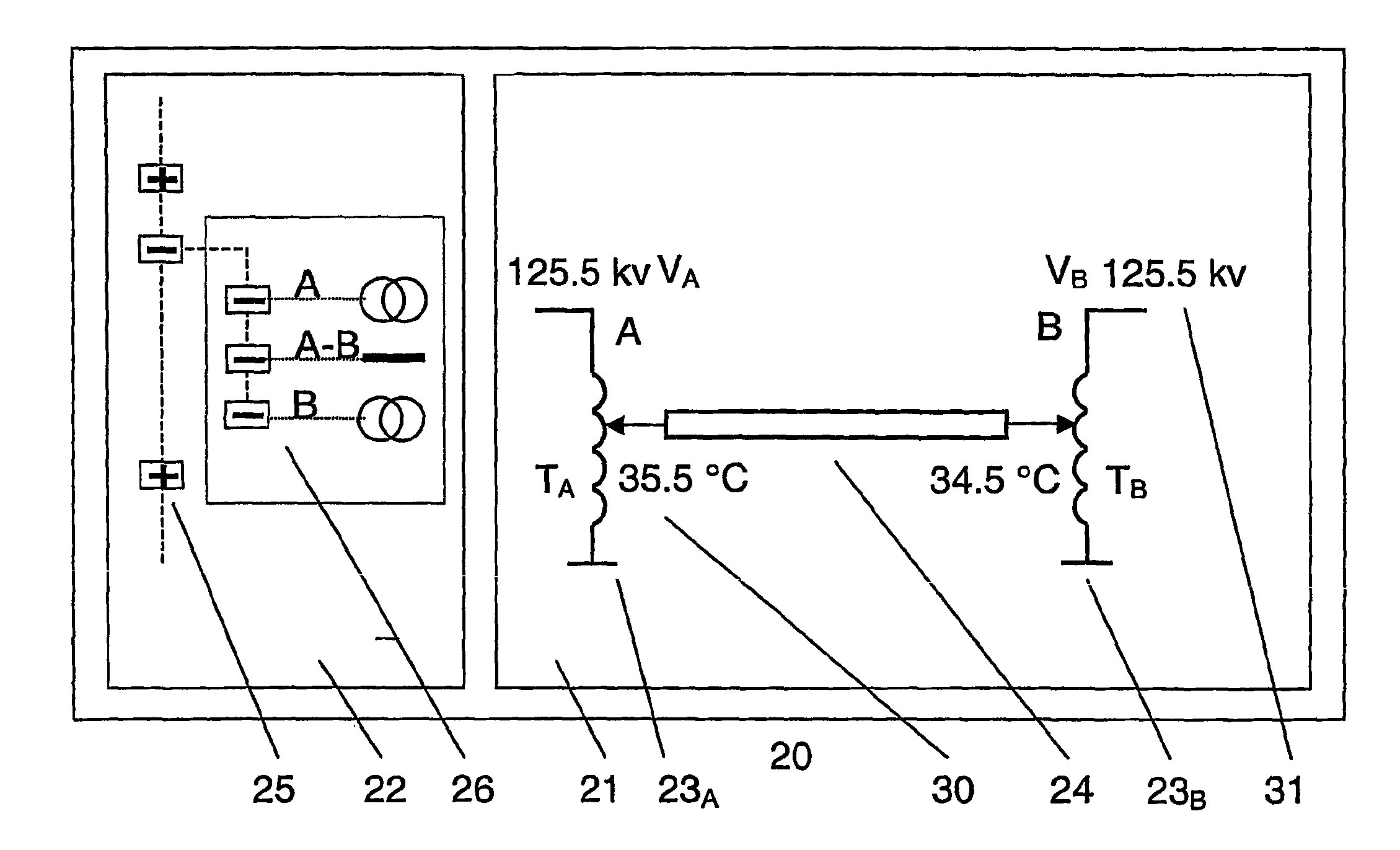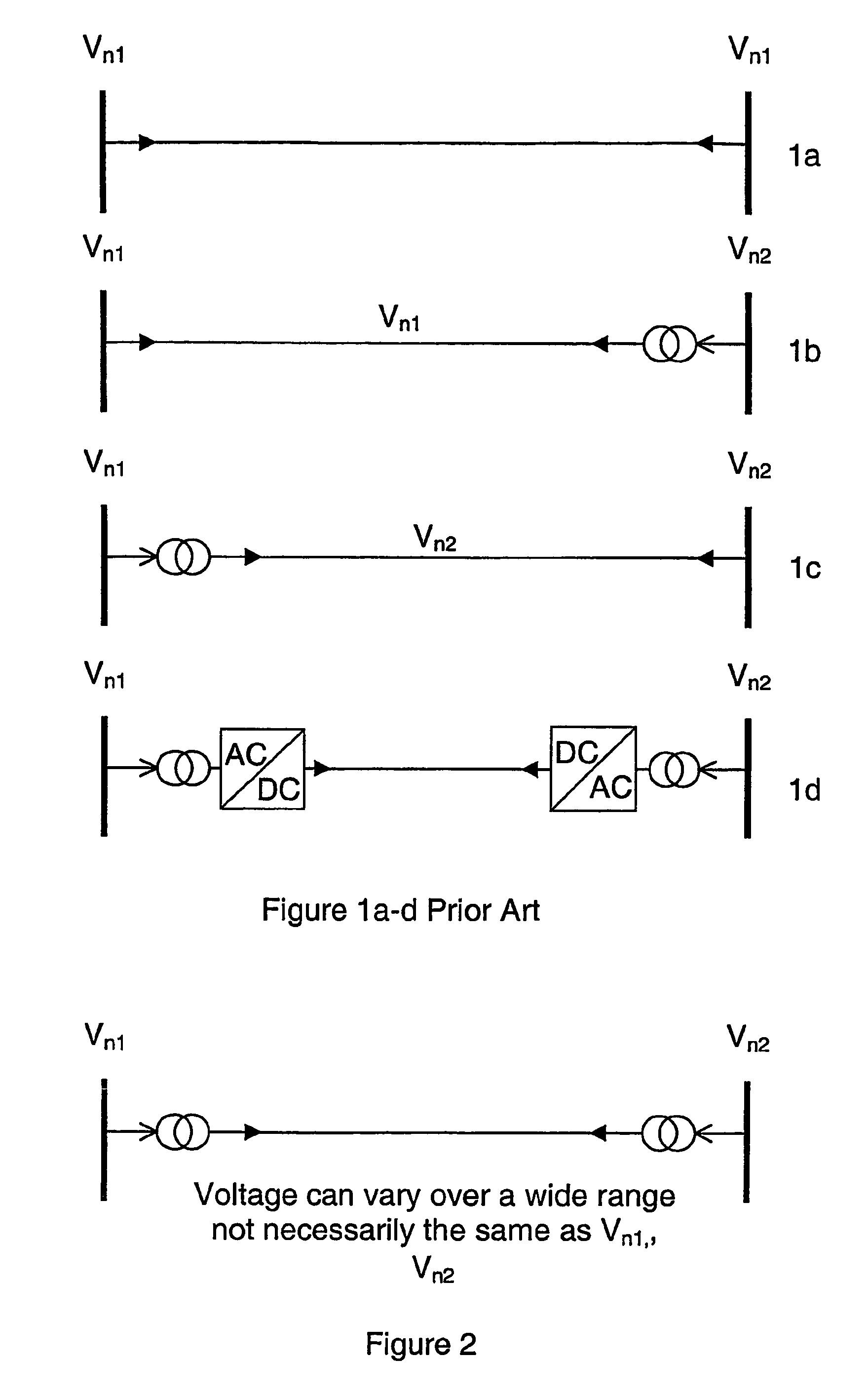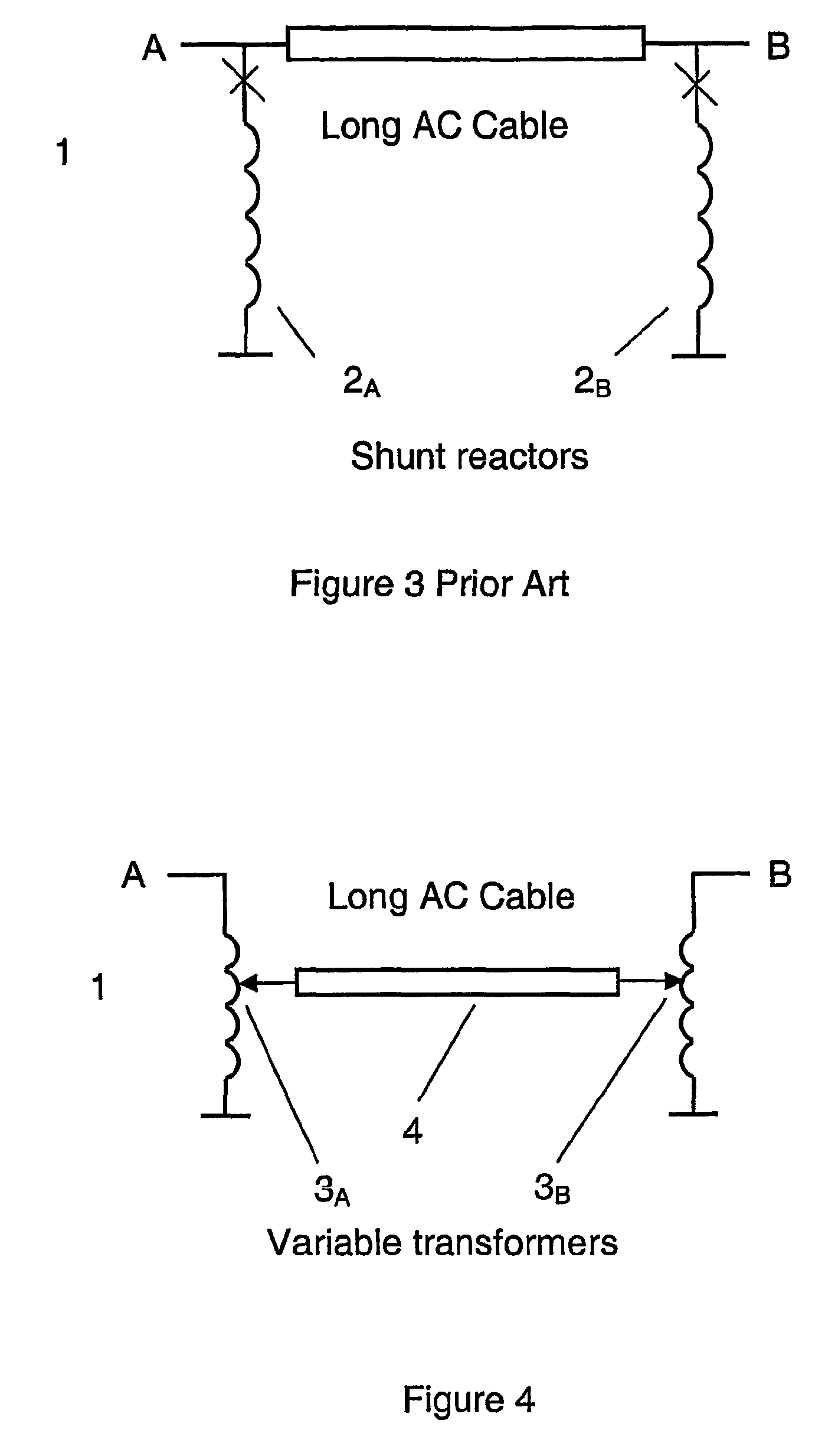System for transmission of electric power
a transmission cable and cable technology, applied in the direction of electric variable regulation, process and machine control, instruments, etc., can solve the problems affecting the maximum transmission length of the cable circuit, and achieve the effects of reducing power loss in operation, reducing power loss, and reducing power loss in construction
- Summary
- Abstract
- Description
- Claims
- Application Information
AI Technical Summary
Benefits of technology
Problems solved by technology
Method used
Image
Examples
Embodiment Construction
[0074]FIG. 1a (Prior Art) shows a HVAC transmission cable of which the nominal operating voltage Vn1 is the same at both ends of the line. If the nominal operating voltage at each end is not the same, Vn1≠V2, one possible Prior Art arrangement is shown in FIG. 1b, where the operating voltage for the cable is Vn1 and a transformer is installed at one end of the cable. FIG. 1c shows the same arrangement except for that the nominal operating voltage for the cable is Vn2. If the distance for AC transmission between terminal points is too great, HVDC technology may be used, as shown in FIG. 1d. In this Prior Art arrangement the problem of reactive power losses is overcome by rectifying from AC to DC current.
[0075]FIG. 2 shows an embodiment according to the present invention. It can be seen by comparing the invention of FIG. 2 to the prior art arrangements illustrated in FIGS. 1a-d that the cable voltage in the system according to the invention does not necessarily have to be the same as ...
PUM
 Login to View More
Login to View More Abstract
Description
Claims
Application Information
 Login to View More
Login to View More - R&D
- Intellectual Property
- Life Sciences
- Materials
- Tech Scout
- Unparalleled Data Quality
- Higher Quality Content
- 60% Fewer Hallucinations
Browse by: Latest US Patents, China's latest patents, Technical Efficacy Thesaurus, Application Domain, Technology Topic, Popular Technical Reports.
© 2025 PatSnap. All rights reserved.Legal|Privacy policy|Modern Slavery Act Transparency Statement|Sitemap|About US| Contact US: help@patsnap.com



